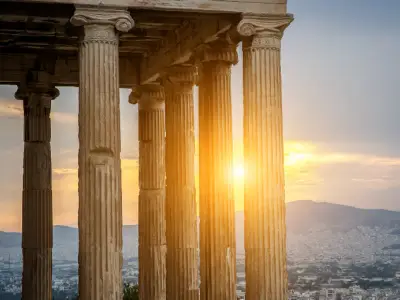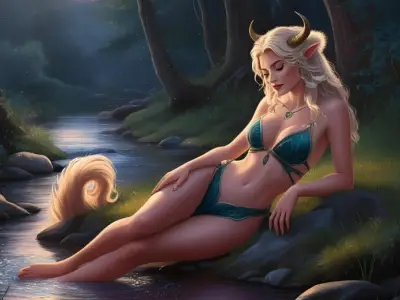Hathor, one of the most significant and widely worshipped goddesses in ancient Egyptian mythology, embodies many roles and attributes that make her fascinating to explore. This blog post will guide you through the myths, symbols, and powers associated with Hathor, the Egyptian goddess of love, music, and much more.
Jump to:
Who is Hathor?
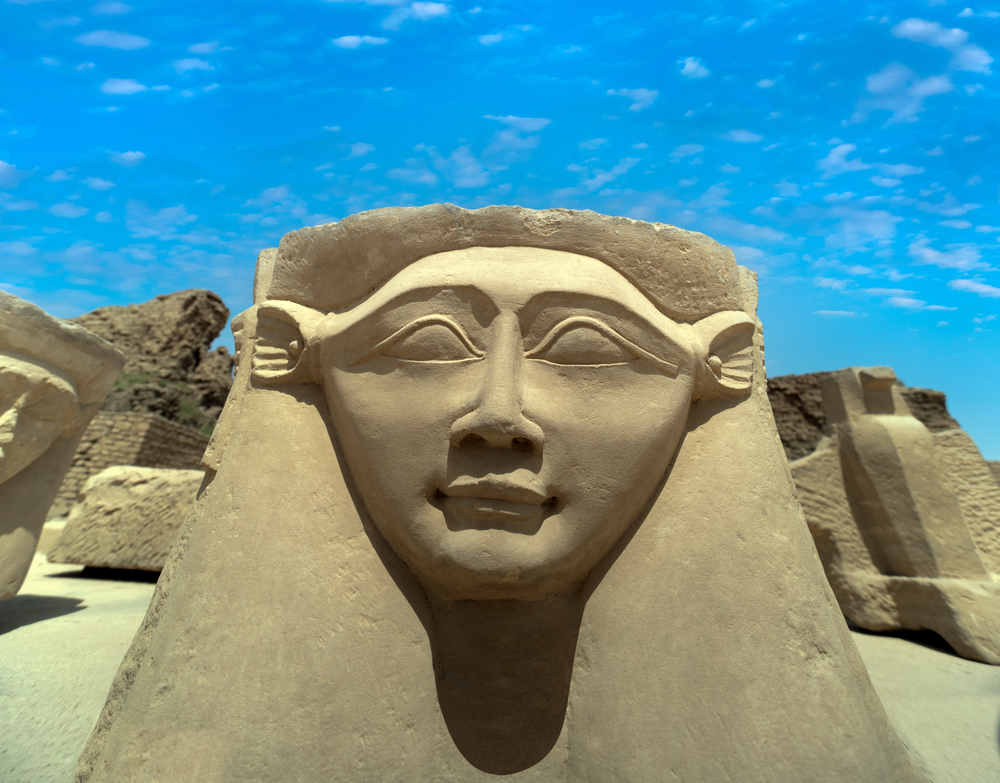
Hathor, known as the "House of Horus," was a sky goddess in ancient Egyptian mythology. She is often depicted as a cow, a woman with cow's ears, or a woman wearing a headdress with a sun disk between cow horns. Hathor's imagery is captivating and symbolic, representing her nurturing and maternal qualities.
Recommended for you!
Best SellersWhat is Hathor the Goddess of?
Hathor is the goddess of many things, primarily love, beauty, music, dance, motherhood, and joy. She is also associated with the sky and fertility, linking her to both earthly and celestial domains. Her multifaceted nature made her a beloved and versatile deity in the Egyptian pantheon.
Was Hathor Good or Bad?
Hathor is generally seen as a benevolent goddess, associated with love, joy, and nurturing. However, like many gods in Egyptian mythology, she has a dual nature, capable of both kindness and wrath, as seen in her transformation into Sekhmet.
Myths and Legends Surrounding Hathor
Hathor's rich mythology is filled with fascinating stories that reveal her complex character and significance in ancient Egyptian culture. Let's explore some of the key myths and legends that highlight her diverse roles and attributes.
Hathor and Horus
Hathor is closely linked to Horus, the falcon-headed god. In some myths, she is considered his mother, while in others, she is his consort. This relationship underscores her role as a nurturing and protective figure, further highlighted in the Temple of Hathor at Dendera, where numerous reliefs depict their bond.
Hathor's Transformative Aspect
One of the most intriguing myths about Hathor is her transformation into Sekhmet, the lioness goddess of war and destruction. When Ra, the sun god, wanted to punish humanity for their disobedience, he sent Hathor, who transformed into Sekhmet and unleashed destruction. Eventually, Ra had to calm her down by tricking her with beer dyed to look like blood, leading her back to her benevolent form. This story illustrates Hathor's dual nature, capable of both immense love and fierce vengeance.
Hathor's Journey to Nubia
Another captivating myth involves Hathor's journey to Nubia. According to this legend, Hathor once fled to Nubia in a fit of anger, transforming into a lioness. Ra, missing her presence, sent Thoth, the god of wisdom, to bring her back. Thoth found Hathor and soothed her with stories and music, gradually transforming her back to her gentle self.
Hathor and the Eye of Ra
Hathor is also associated with the Eye of Ra, a powerful symbol of protection. In this myth, Ra sent Hathor as the Eye to punish humanity for their wickedness. However, Hathor's wrath was so intense that Ra had to intervene to prevent her from destroying all of humanity. He tricked her with a lake of red beer, which she drank, believing it to be blood, and fell into a deep sleep. When she awoke, her rage had subsided, and she returned to her role as a loving and protective goddess.
Symbols of Hathor
Hathor's rich iconography and powerful symbols highlight her significance in ancient Egyptian culture. Each symbol and representation reflects a unique aspect of her divine nature.
- Hathor's Iconography: The most recognisable symbols associated with Hathor include the cow, the sistrum (a musical instrument), and the menat (a ceremonial necklace). These symbols reflect her roles in nurturing, music, and protection.
- The Hathor Statue: Statues of Hathor often depict her with a sun disk and cow horns, signifying her connection to the sky and the sun god Ra. These statues also served as protective amulets for those who worshipped her.
Powers of Hathor
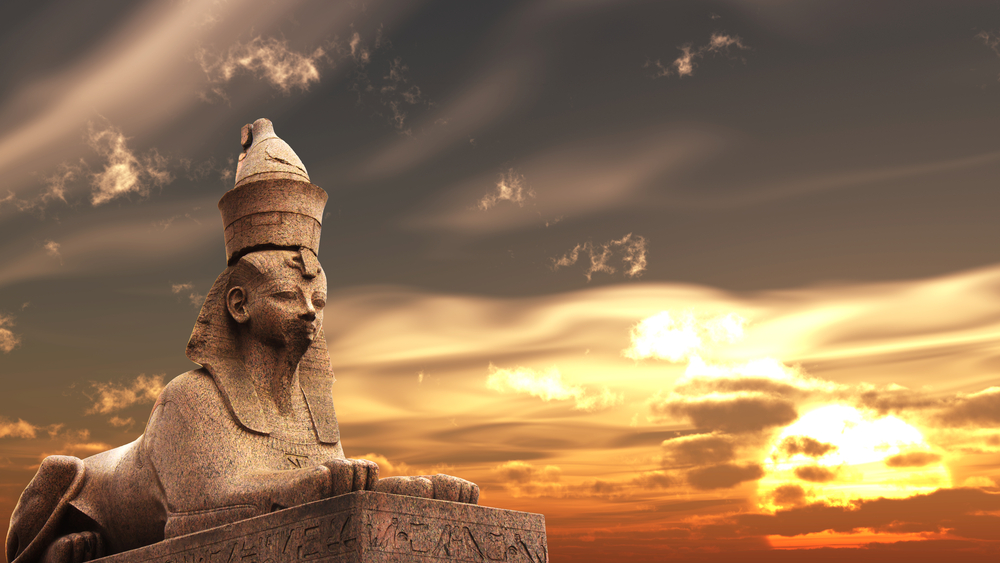
Hathor's powers are diverse, ranging from granting fertility and abundance to providing protection and healing. She is also known for her ability to inspire love and joy, making her a patroness of all things beautiful and pleasurable.
Family Tree and Relationships
Hathor's relationships and family connections are integral to understanding her role within the Egyptian pantheon. Her interactions with other gods highlight her importance and versatility.
- Parentage: Hathor is often considered the daughter of Ra, the sun god. This connection highlights her link to the sky and her nurturing, maternal qualities.
- Hathor and Horus: In some myths, Hathor is the mother of Horus, the falcon-headed god associated with kingship and the sky. In other versions, she is his consort, highlighting her protective and loving nature.
- Consort of Ra: Hathor is sometimes depicted as the consort of Ra, further cementing her association with the sun and the heavens.
- Sibling Relationships: Through various myths, Hathor is often connected to other significant deities, including Isis and Osiris. These connections illustrate her integral role in the broader narrative of Egyptian mythology.
Worship and Rituals
Worship of Hathor was widespread across ancient Egypt, with rituals and festivals dedicated to celebrating her many attributes. The most prominent site for her worship was the Dendera Temple Complex, where elaborate ceremonies and offerings were made in her honour.
Music, dance, and feasting were integral parts of Hathor's worship, reflecting her association with joy and celebration. Devotees often presented her with offerings such as milk, beer, and honey, symbols of nourishment and sweetness. The sistrum, a musical instrument sacred to Hathor, was frequently played during these rituals to invoke her presence and favour.
The Dendera Temple Complex
One of the most remarkable sites dedicated to Hathor is the Dendera Temple Complex. This temple, located in Dendera, Egypt, is a testament to Hathor's importance and the respect she commanded. The Dendera Hathor Temple is adorned with intricate carvings and inscriptions that celebrate her divine attributes.
Hathor's Legacy
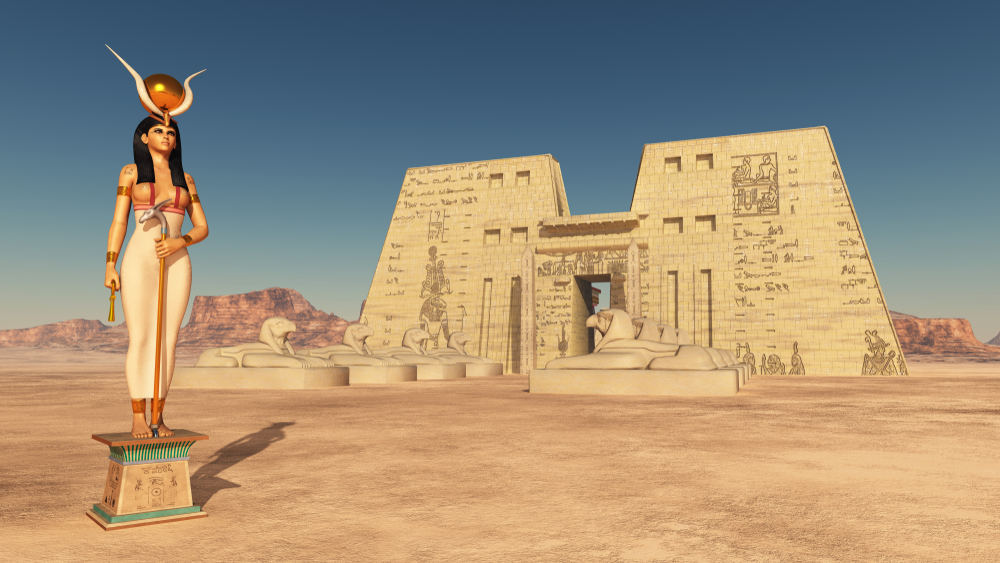
Hathor's influence extends far beyond ancient Egypt, leaving a lasting legacy that continues to captivate modern scholars and enthusiasts of mythology.
Her dual nature as a nurturing mother and a fierce protector resonates in various cultures, showcasing the complexity and depth of her character.
The artistic depictions and monumental temples dedicated to Hathor, such as the Dendera Hathor Temple, serve as enduring testaments to her significance in ancient Egyptian society.
Today, Hathor's symbols and stories continue to inspire and fascinate, highlighting her timeless appeal and the enduring power of her mythos.
Recommended for you!
Best SellersFrequently Asked Questions About Hathor
What Colour is Associated with Hathor?
Hathor is often associated with the colour gold, symbolising her connection to the sun and her role as a goddess of beauty and abundance.
What is Hathor's Weakness?
While myths do not explicitly describe Hathor's weaknesses, her transformative nature into Sekhmet suggests that her rage and destructive potential can be seen as a vulnerability. It highlights the delicate balance between her nurturing and vengeful aspects.
How Can You Tell the Difference Between Isis and Hathor?
Hathor and Isis are often confused due to their similar roles as protective and nurturing goddesses. However, Hathor is usually depicted with cow horns and a sun disk, while Isis often wears a throne-shaped headdress. Understanding these symbols helps distinguish between these two powerful deities.
Who Came First, Hathor or Isis?
Hathor is one of the oldest deities in Egyptian mythology, predating many other gods and goddesses, including Isis. This ancient origin underscores her foundational role in Egyptian religious beliefs.
Did Hathor Have a Child?
While Hathor is sometimes depicted as the mother of Horus, in other myths, she does not have children. Her primary role is more aligned with nurturing and protecting rather than motherhood.
Why is Hathor Important?
Hathor's importance lies in her multifaceted nature. She embodies love, music, joy, and motherhood, making her a versatile and deeply worshipped goddess. Her worship extended beyond Egypt, influencing various cultures and leaving a lasting legacy that can still be felt today.
Study Egyptian Mythology for £29
If you're eager to learn more about Hathor and other intriguing aspects of Egyptian mythology, consider exploring the Egyptian Mythology Diploma Course with Centre of Excellence. For a limited time, you can enrol in this course for a discounted price of £29.










